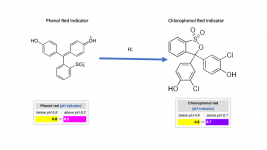GSD_fanatic
Bronze Supporter
Thanks Matt...yes mine has the 4.0, along with 7.0 and 10.0
Glad you clarified using the 4.0, otherwise I may have been huh? lol The main reason for using the PH60 in this case is just having another way to verify. I trust the K2006 now that I've used it awhile, and can even see the transitions of color easier. But that is mostly because of repetition. At first I was having trouble recognizing the color change on some tests. I am color blind to a degree, mostly with the yellow and greens, but some shades of red as well. Like the PH test...at first I couldn't tell any difference comparing colors. But now I hold it up to a light/bright background and can easily see the color comparison.
Glad you clarified using the 4.0, otherwise I may have been huh? lol The main reason for using the PH60 in this case is just having another way to verify. I trust the K2006 now that I've used it awhile, and can even see the transitions of color easier. But that is mostly because of repetition. At first I was having trouble recognizing the color change on some tests. I am color blind to a degree, mostly with the yellow and greens, but some shades of red as well. Like the PH test...at first I couldn't tell any difference comparing colors. But now I hold it up to a light/bright background and can easily see the color comparison.


